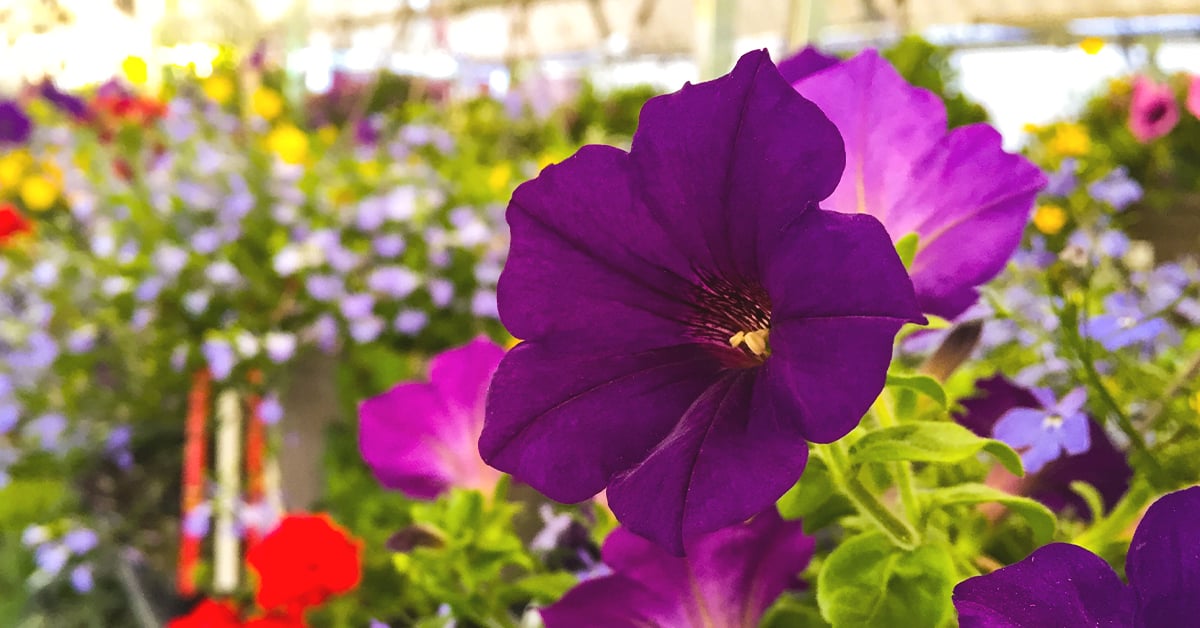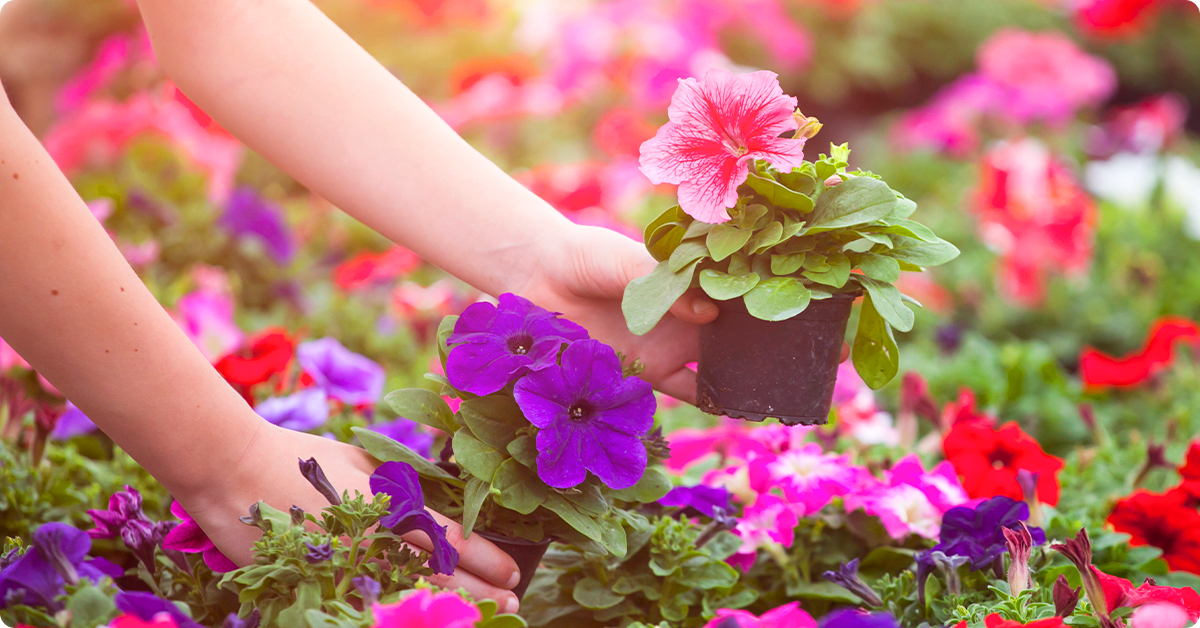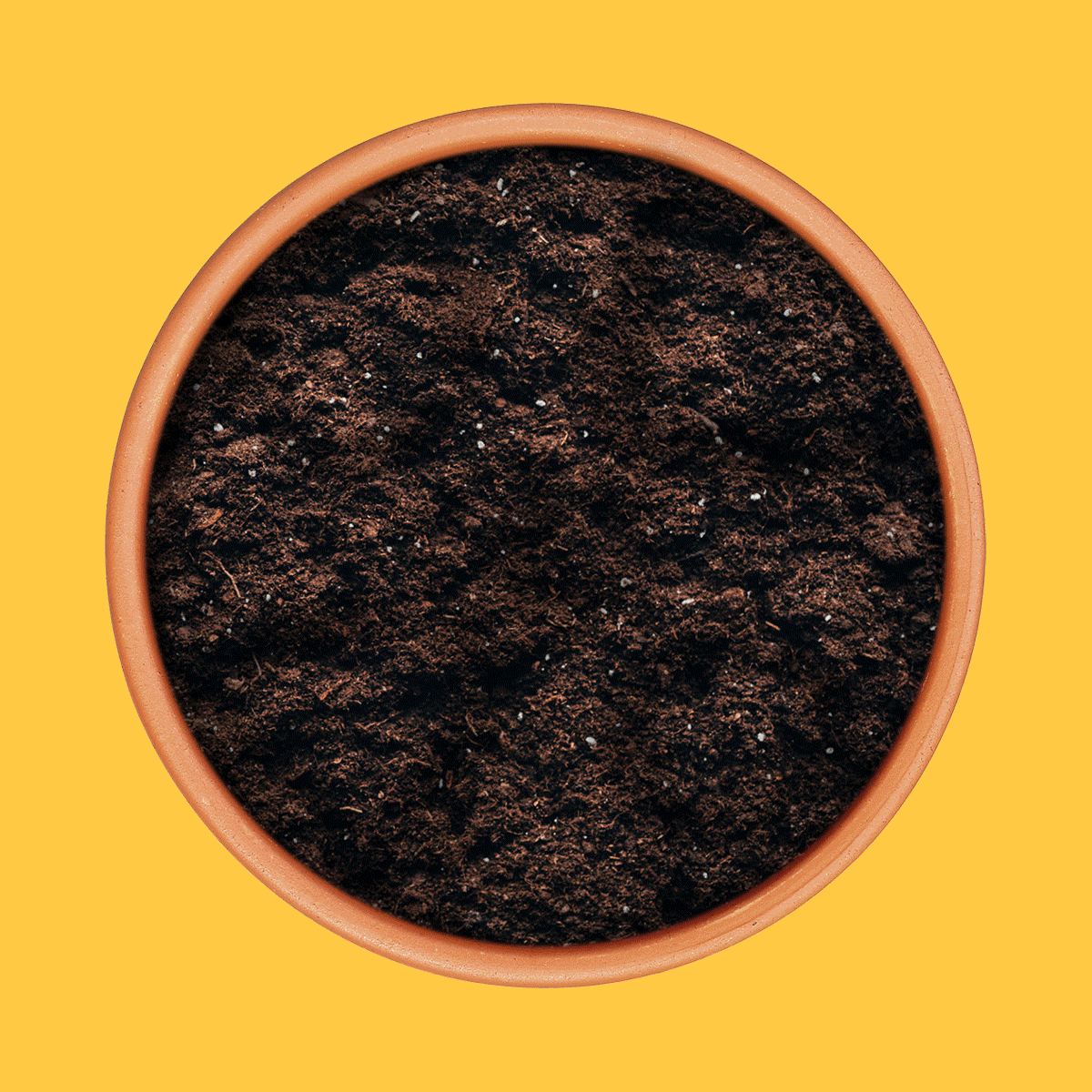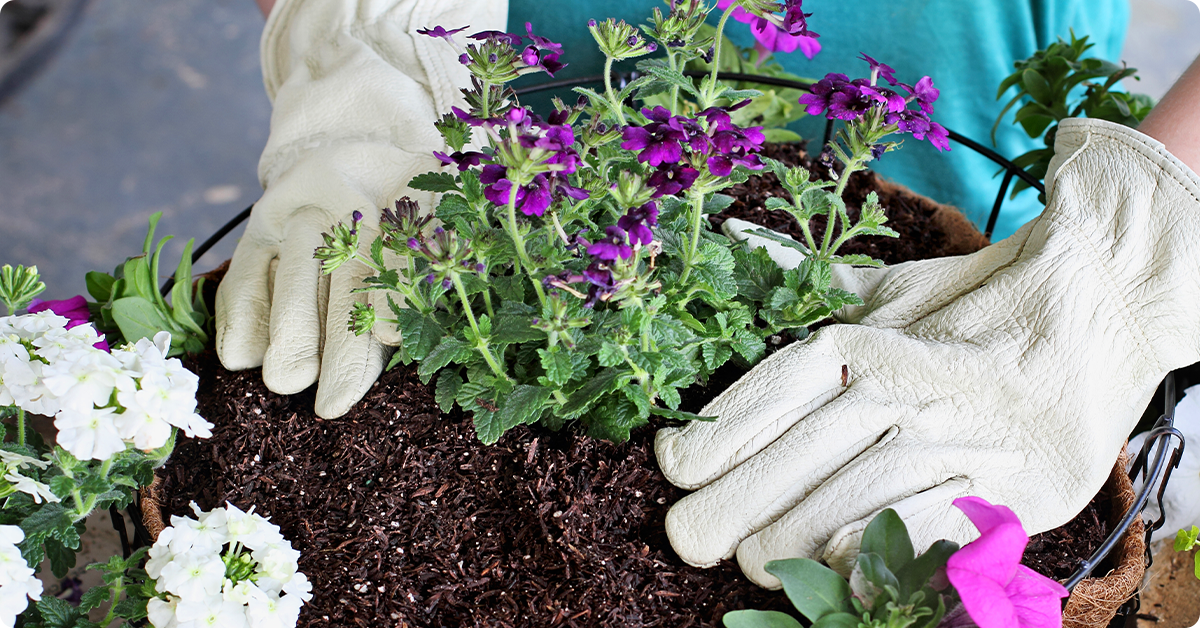
Everybody has that one friend or family member that seems to grow the most beautifully potted flower arrangements, year after year. Their planters are brimming with tall, colorful flowers, all of which are planted just right to look gorgeous and full from every angle. How do they do it?
The secret is knowing which flowers to start with, how to arrange them, and of course, how to care for them. Most great flower baskets start with upright flowers, balanced with a mix of broad and trailing plants. Every flower plays a role, so be sure to mix and match shapes, heights, and colors. To get started, let’s talk about preparing your planter.
Step 1: Preparing Your Containers or Baskets
When planning your baskets and planters, choose plants that best fit your environment. Pick the right colors for you, whether they’re bold, exciting combinations or colors complementary to your home and landscape. Also consider the growing conditions. Will the basket or planter be sitting in the sun or shade? And, how much moisture will your new plants require? Develop a plan with each of these details in mind and build around it.
Fill your containers with a potting mix rather than garden soil. Potting mixes drain better, and garden soil may contain weed seeds and pests you don’t want in your containers. IFA Premium Potting Soil and Black Gold All Purpose Potting Mix are both formulated with the finest blended ingredients, and provide good moisture retention and drainage.
When filling your containers, dampen the soil and allow some space between the top of the basket or planter and the surface of the soil. This will allow water to soak into the soil as opposed to running out of the container.

Step 2: Choosing the Best Flowers for Your Planters
Mixing shapes, heights, colors, and plants is the key to creating a beautiful potted flower arrangement. Consider a basic recipe that includes a combination of the following types of plants:
1. Thrillers: Make a Statement
Thrillers are tall, upright plants. They’re the attention-getting star and make the perfect centerpiece for your flower baskets and planters.
Great thrillers
-
-
- Cordyline
- Dracaena Spikes (Green Cordyline)
- Carex (Ice Cream Grass)
- Juncus, Pennisetum Rubrum (Purple Fountain Grass)
- Geraniums (upright)
-
2. Fillers: Grow Bold
Fillers are colorful and tend to add volume by growing up and out. They’re naturally the most flowery and stunning in any container.
Great fillers
-
-
- Petunia (upright)
- Osteospermum (African Daisy)
- Phlox Intensia
- Geranium
- Lobelia
-
3. Accents: Contrast Naturally
Accents weave through the thrillers and fillers, and add much-needed foliar texture. While accents usually lack the bold color associated with fillers, they provide great shape and visual contrast.
Great accents
-
-
- Ipomoea (Sweet Potato Vine)
- Lysimachia, Plectranthus
- Lotus
- Coleus
- Vinca
-
4. Trailers: Cascade Beautifully
Trailers cascade over the sides of the container, softening its edges. They unify the composition by climbing through the arrangement, or simply, adding a complementary color, shape or texture.
Great trailers
-
-
- Petunia (trailing)
- Verbena (trailing)
- Calibrachoa (Million Bells Petunia)
- Bidens
- Bacopa
- Lobularia
-

Step 3: How to Plant Your Flowers
Now that you’ve chosen your flowers and your hanging basket or planter is ready, let’s start planting.
1. Dig Holes for Each Plant
Dig your holes where you want to place each plant. Make sure the holes are deep and wide enough to hold the plant’s root system. To make sure it’s the right size, place the pot itself inside the hole.
2. Carefully Remove Each Plant
Carefully remove each plant from its pot. Hold the pot with one hand and place your other hand around the base of the plant. Tip the pot to the side and allow the plant and soil to slide out.
3. Loosen the Root Ball
Loosen the root ball, especially if the roots are heavily entwined or match the shape of the container. To make sure the roots grow outward into the surrounding soil, gently tease or pull on the roots with your hands.
4. Place the Roots in the Soil
Place the roots in the soil. If the hole is too deep, fill it in slightly with a handful or two of loose dirt. Gently fill soil around the roots until the hole is filled, and pat the soil down to remove gaps and support the plant.
5. Feed, Water & Nurture
To help establish your plants, thoroughly water, and pinch off existing flowers so all of the energy is placed into developing a strong root system.

Keep Your Potted Flowers and Plants Beautiful
Your flowers are now planted and looking good. The main goal from this point on is to maintain healthy, colorful plants throughout the summer.
1. Water Deeply and Regularly
First, water your plants deeply and regularly to make sure it reaches the bottom roots. This encourages the roots to grow down toward the bottom of the basket or planter, and develops a stronger overall plant.
They prefer water in the morning or evening and less in the mid-day sun. Also make sure to water the soil and not the leaves. Wet leaves can lead to fungus, mildew, disease, and in some cases, sunburn.
Check the moisture level before each watering by sticking a finger an inch or two below the surface. If it feels dry around your fingertip, your plants need water. Moisture levels can also change quickly on a hot summer day. A basket or planter that feels quite moist in the morning may be dry by mid-afternoon
Hanging baskets hold a small amount of soil and tend to dry out quickly. There’s also less room for roots to spread and grow. Give your hanging basket flowers a good, long drink of water four to five times each week, and possibly daily if weather conditions are extremely hot or windy. Add enough water so it runs out of the bottom of the basket, and make sure to hit the edges along with the center of the basket.
2. Fertilize, Prune and Deadhead
One last thing to remember: healthy plants produce new blossoms. To maintain your plants health and to stimulate growth, make sure to fertilize, prune, and routinely deadhead your flowers.
Feed Your Flowers To Produce Gorgeous Pots and Planters
When fertilizing, you have two types of options. Liquid feeds such as IFA Grand Champion All Purpose Fertilizer or Fertilome Blooming & Rooting Plant Food may be applied once per week (or every other week) when watering. Also consider adding IFA Accel when applying these liquid fertilizers to help them perform better. IFA Accel a special formulation of organic-based materials that act as a spreader sticker, wetting agent, pH buffer and penetrant. When mixing, add Accel to the water first. Then add the fertilizer; stir and apply.
As an alternative or additional benefit, long feeding pellets such as Fertilome Garden Cote 6 are a time release option that will feed your plants for the entire season with only one application. They will provide a small amount of fertilizer with each watering to either provide or supplement weekly fertilizations.
For organic garden pots and planters, we recommend True Organic Rose & Flower Food 4-5-3 or True Organic Raised Bed Plant Food 6-3-6. Both are OMRI-listed products that will help stimulate plant growth and produce more blooms.
Prune and Deadhead To Improve Appearance and Encourage New Blooms
Snipping blooms that are past their prime improves the appearance of your plants and encourages them to produce more flowers. Remove any wilting or dead blossoms or plants with a pair of gardening shears.
Get Creative with Colors and Textures
There are many plant variations and even more combinations. Use this recipe as a guide and explore the possibilities. Be colorful and bold, but more importantly, choose a combination you’ll enjoy in your yard all year long.
Brighten up your spring with these popular flowering bulbs >>
Information for this article was provided by Kent Mickelsen, Utah Certified Nurseryman, IFA.









